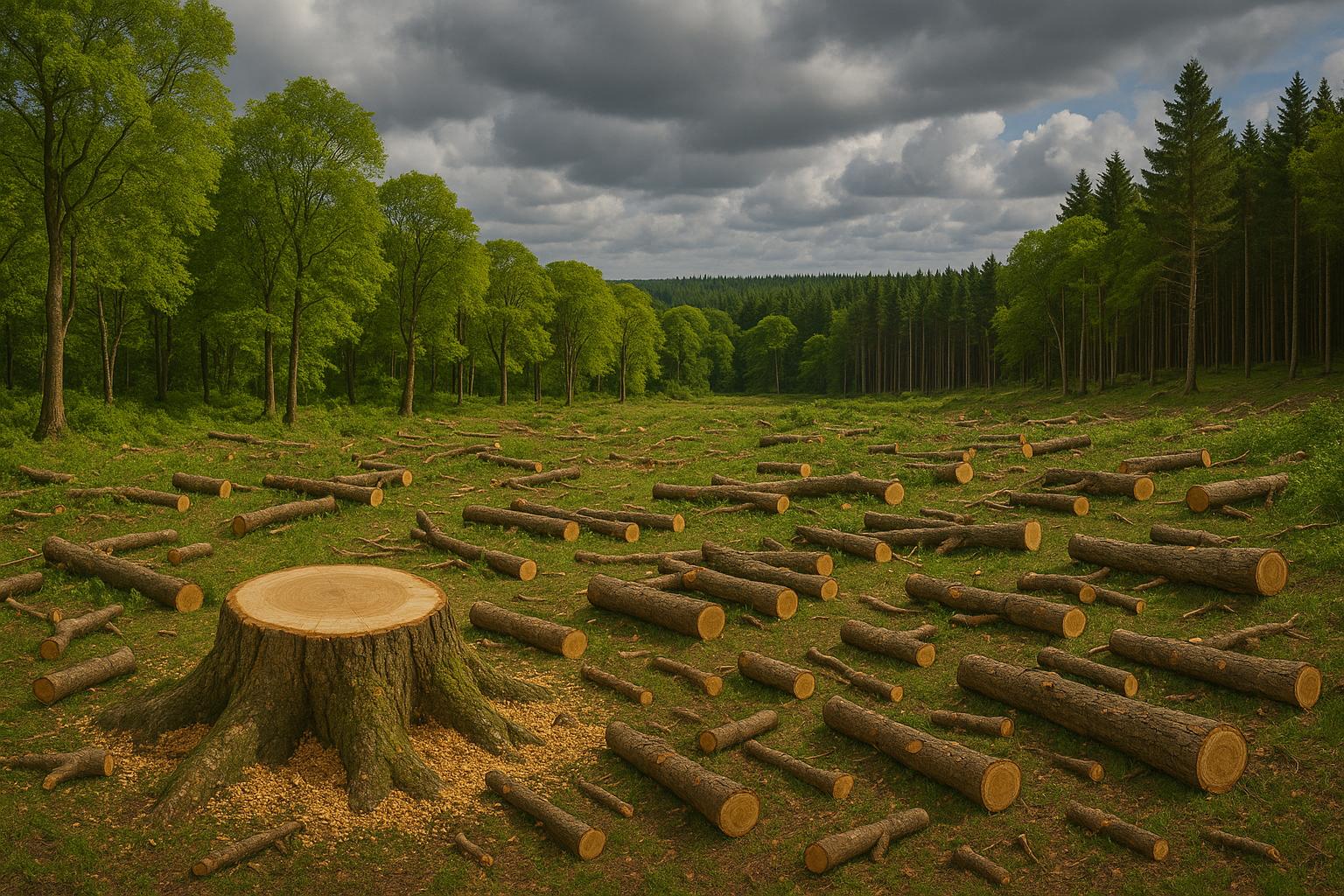The recent felling of the Sycamore Gap tree, adjacent to Hadrian’s Wall in Northumberland, has ignited discussions regarding the urgent need for enhanced legal protections for trees in the UK. This case is particularly poignant as two men are set to be sentenced today for what has been described as an act of “mindless destruction.” Environmental experts, including James Canton, a lecturer at the University of Essex, view this incident as a “symbolic” moment that underscores our disconnect with nature and the pressing health of our woodlands.
Canton, who spent years studying an ancient oak tree, reflected on the emotional benefits of connecting with nature, stressing, “We’re happier sat in an oak tree ten foot from the ground, watching blue tits feeding on caterpillars – involved and immersed in that natural world.” He is the author of *The Oak Papers*, which details his interactions with the Honywood Oak, illustrating the profound connection many feel to such trees.
Historically, the UK was covered in forests; around 6,000 years ago, an estimated 75% of land was filled with trees like oak and pine. Yet today’s realities reveal that the UK is among the world’s most nature-depleted nations, with only 13% woodland cover compared to a European average of 38%. Recent planting efforts, although promising, still fall short: statistics reveal that while 20,700 hectares of new woodland were established between April 2023 and March 2024, this number dropped to 15,700 hectares over the following year, primarily due to decreased activity in Scotland.
Furthermore, only 7% of existing woodlands are deemed to be in good ecological condition, highlighting a critical situation. Prof. Mary Gagen from the University of Swansea points to the UK’s “odd relationship” with trees, as it simultaneously cultivates affection and neglect. Experts warn that while there are initiatives to plant new trees, insufficient care is given to existing ones. Andrew Allen of the Woodland Trust expressed concern over the disproportionate focus on new plantations at the expense of maintaining mature trees.
In addition, ancient trees, which serve as vital habitats for numerous species, lack automatic protections. Currently, only around 20% of the nation’s most important veteran trees are safeguarded within protected areas. The Tree Council has called for stronger legislative measures to protect significant trees, advocating for the creation of a statutory list and harsher penalties for those who harm them.
The proposed Heritage Trees Bill aims to address these issues and is currently under governmental review. Jess Allan, from the Tree Council, noted the public’s strong emotional response to the loss of the Sycamore Gap tree as indicative of their environmental significance. She stated, “These trees are socially, culturally and environmentally important.”

While some advocate for legal reforms, there is skepticism regarding their effectiveness in preventing future incidents, as discussed by Sarah Dodd from Tree Law. She argues that substantial efforts should focus on fostering a greater public appreciation of trees to deter acts of recklessness.
Also Read – Introducing $LUCK: The Lakshmi Coin Merging Wealth, Purpose & Spiritual Power
Jon Stokes of the Tree Council argues that protecting celebrated trees is essential to preserving the country’s heritage and ecology. He cited examples from other nations where penalties for tree destruction are far steeper.
Although challenges loom ahead, experts suggest that comprehensive solutions could involve additional woodland creation, improved forest management, and innovative techniques like agroforestry. However, Prof. Gagen cautioned that achieving these goals will require complex societal choices. “A single big tree in the right place is providing thousands of pounds worth of carbon store, flood protection, free air conditioning, habitat, wellbeing provision, pollution control and a hundred other benefits… That needs to change to save UK woodlands,” she asserted.
Reflecting on the future, Canton hopes society will embrace an evolved view towards trees, advocating for protective rights for those over a century old. He envisions a shift where society aligns closer with its emotional ties to the natural world, creating a legacy that honors the trees that define our landscapes.







